Tonewheels
Here are some electro-optical tonewheels for experimental music.
To get sound from them, there are two requirements. First, the tonewheel must be spinning. Second, you need an optical pickup system to read sound from the moving marks. For this, we suggest a laser pointer and a Lite2Sound photodiode amplifier. Or you could use other light sources and CdS (LDR) photoresistors as sensors. If this were the 1950s you might be using a photomultiplier (PMT) tube and an incandescent lamp with focusing lenses.
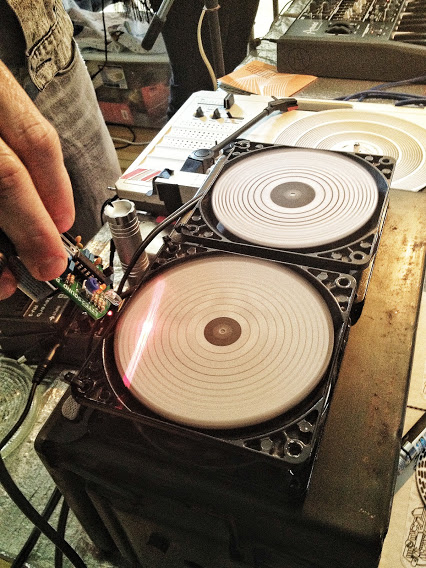
Preparing the tonewheels
Print it out and spin it – that is the principle. But the sound quality depends on certain details.
Ideally a tonewheel is rigid enough to stay flat. If you print a tonewheel on regular office paper it will be flexible. It will tend to curl. Its surface will become distorted while it spins and that makes it difficult to use properly. So as a simple fix, you could glue paper tonewheels to a rigid back like cardboard, foam core, mat board, rigid plastic sheet, etc.
If the tonewheel is printed on textured stock, the surface texture will make a contribution to the sound character. Paper that has a rough or matte surface will add natural noise to the audio timbre. Glossy paper like photographic print paper gives the least noise and strongest signal output.
You can also print tonewheels with black ink on transparent film and shine light through them instead of reflecting off of them.
Before you use a tonewheel, you must trim it to a precise circular shape. Its center of mass must be at the exact center of the wheel. Otherwise it will vibrate or wobble while its spinning and that leads to a warbly or shivering tone quality.
Spinning the wheels
Spike the tonewheel onto the shaft of a motor and fix it in place so it rotates smoothly. Experimentation will be necessary here.
If the motor has speed regulation, it rotates at a steady rate so the pitch will be stable. Smooth harmonic droning sounds are produced.
If the motor lacks speed regulation, the pitch will be unstable, drifting upward and downward randomly.
If the motor shaft axis is not through the exact center of the wheel, the pitch will be unstable and warble or vibrato type sounds will be heard.
How fast should it rotate? The faster it spins, the higher the pitch. A phonograph turntable at 33 or 45 RPM is too slow for most of these tonewheels, and they will only produce pitches in the low bass register. The 45 RPM Chord Wheel is an exception. It has very finely spaced marks so it produces higher pitches than the others while its turning on a phonograph platter. All the other tonewheels sound best spinning at a higher RPM. You can try mounting a tonewheel onto the rotor of a small fan like used for computer cases.
Remember – always use caution when working with spinning motors and machinery. As a matter of safety, don’t use strong motors like power tools for this purpose.
Optical pickup
To hear sound, a beam of light shall be modulated by the marks on the wheel. A red laser pointer works well because photodiodes are very sensitive to red light. Bounce the laser off of the spinning tonewheel and position Lite2Sound photodiode sensor to catch the reflected light.
The diameter of the beam has a strong influence on the tone quality. In general, the beam must be smaller than the marks on the wheel. The size of the beam acts like a low pass filter for the audio. The narrower the beam, the higher the audio cutoff frequency. If the beam is very small, pinpoint sharp, you’ll hear fine details like the surface texture of the paper. If the beam is wider, like the diameter of a pencil, then you will hear a warmer, less treble-intensive sound. But if the beam is very wide or unfocused, as with a regular flashlight, then the system will exhibit a subaudible low pass cutoff frequency. With a flashlight you won’t hear any sound from the tonewheel – you’ll only hear sound from modulations emitted by the light source itself.
Bringing the photodiode sensor close to the tonewheel can boost the sound quality.
There are also laser line projectors which emit a line-shaped beam instead of a spot. These give different results and are worth experimenting with.
Remember – always be cautious about eye safety for yourself and others whenever lasers are in use.
Where does the sound come from?
The tonewheels have multiple tracks. Each track has evenly spaced alternating marks. The white regions reflect light, but the black marks absorb light. That reduces the intensity of the reflected light in a periodic pattern. Therefore the reflected light is amplitude modulated at a frequency equal to the rotational rate (Hz) multiplied by the number of divisions on the tracks.
45 RPM Chord Tonewheel .JPG .PDF
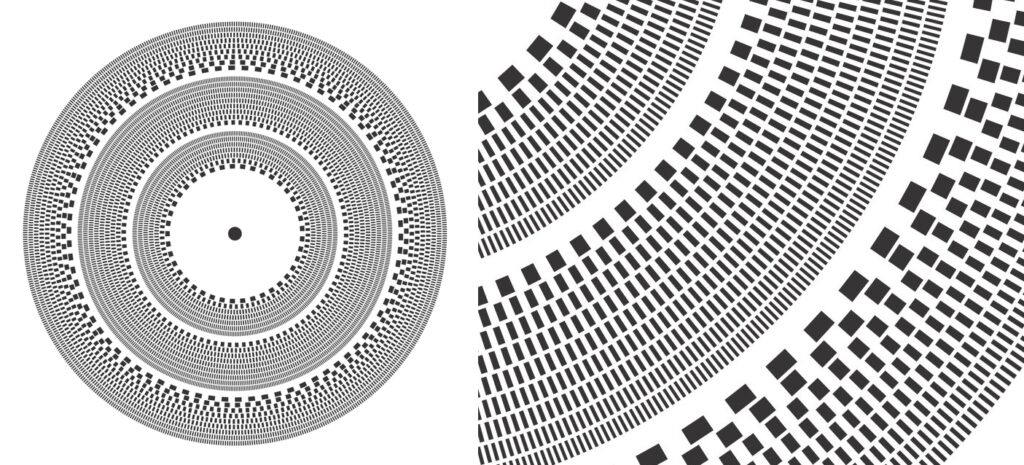
Continuous Frequency Spiral .JPG .PDF
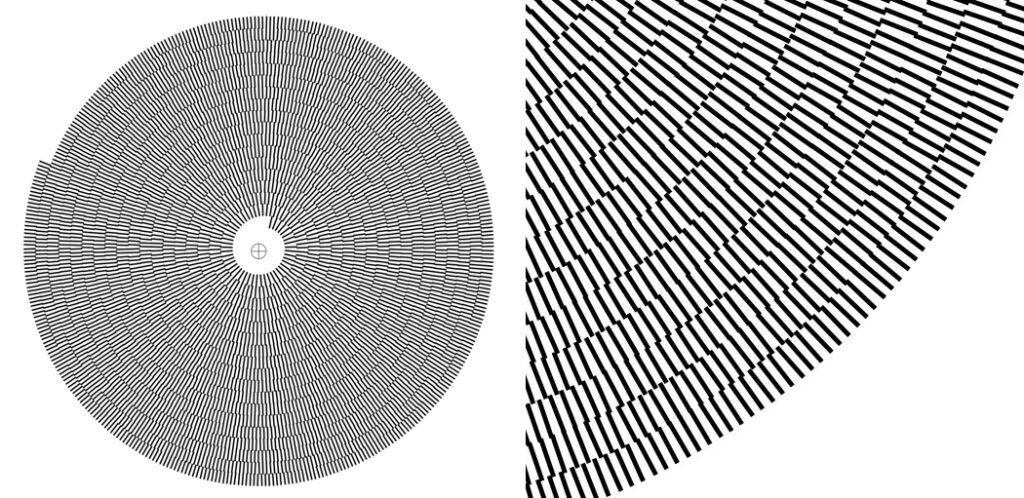
Root-5th Tonewheel (Power Chord) .JPG .PDF
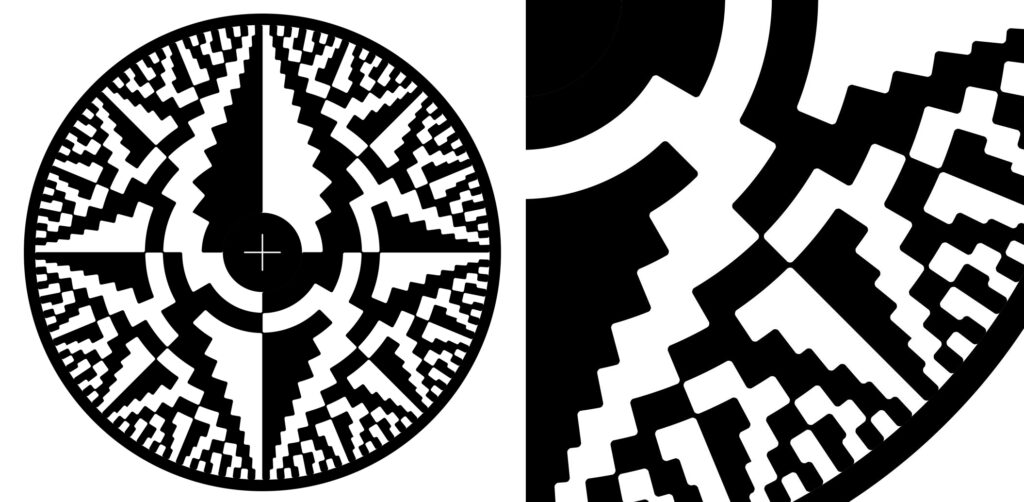
Strobe Tuner Octave Disc .JPG .PDF

Walsh Function Disc 1 .JPG .PDF
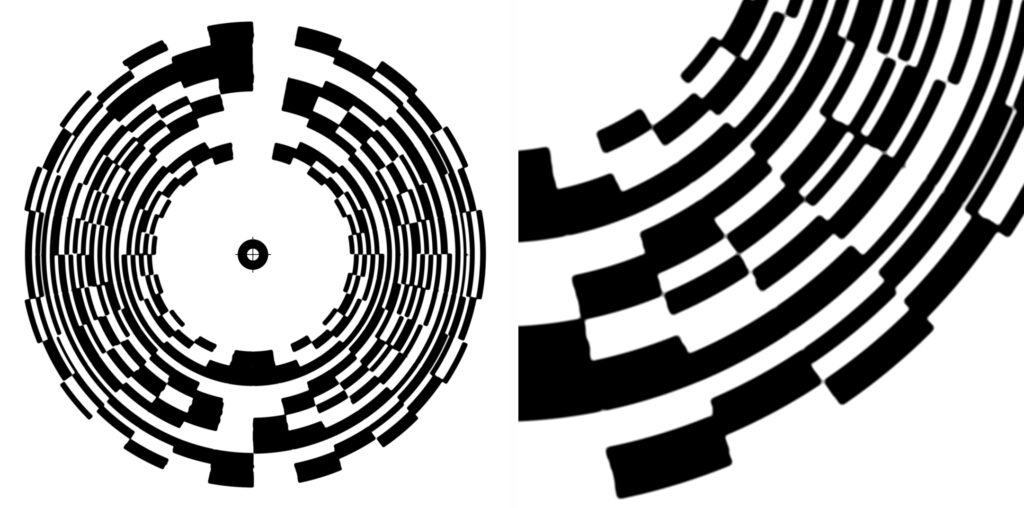
Walsh Function Disc 2 .JPG .PDF
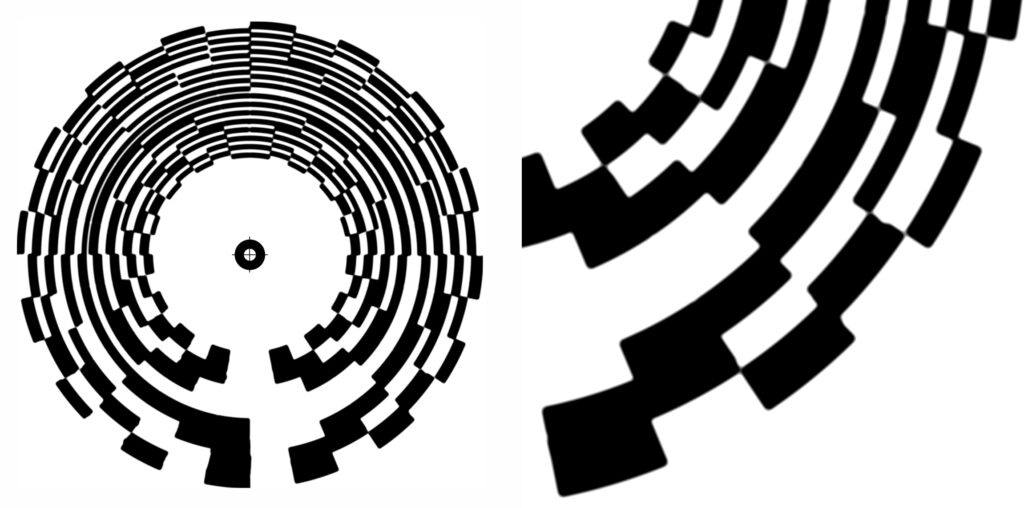
Root-4th-5th Tonewheel .JPG .PDF
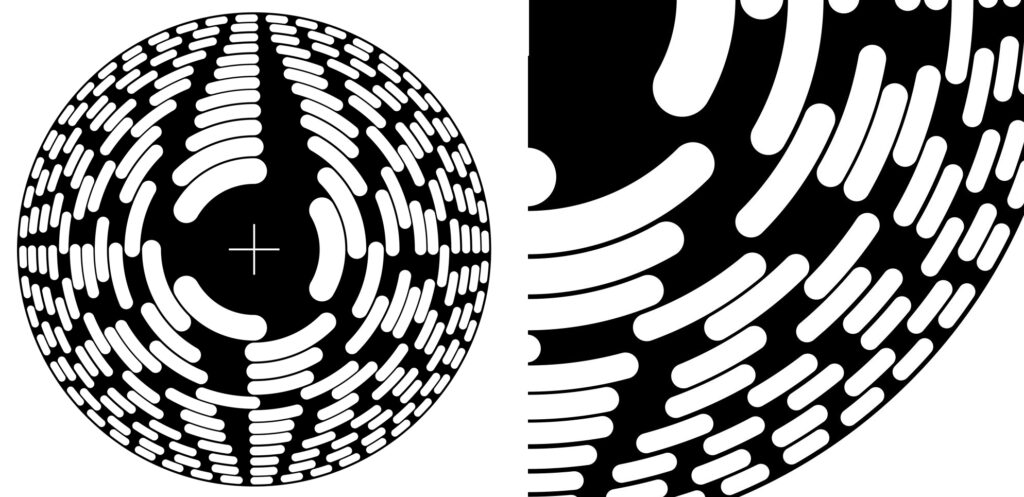
The tonewheels on this page were drawn by Eric Archer of Rare Waves LLC.
